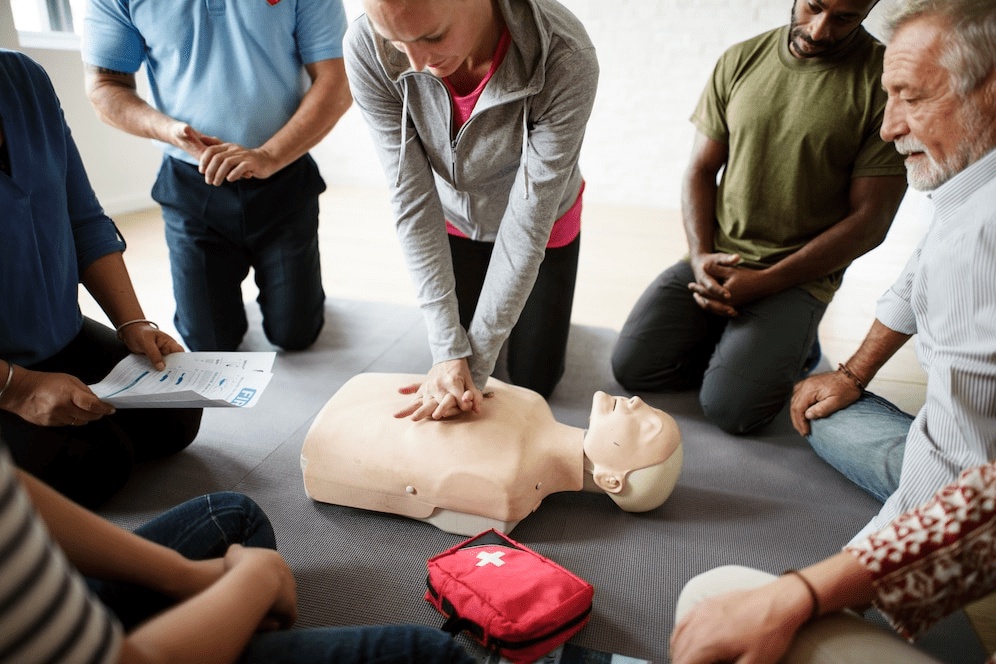In a world where emergencies can strike at any moment, being equipped with life-saving skills can make all the difference. Cardiovascular emergencies, accidents, and unforeseen accidents can happen anywhere, from the workplace to a bustling street corner. That's why becoming a certified CPR professional isn't just a valuable skill—it's a potentially life-saving one.
So, you're ready to embark on the journey of becoming a certified CPR professional? Fantastic! Strap in, because we're about to walk you through the ins and outs of this rewarding and crucial career path.
First things first, let's break down what CPR actually is. CPR, or Cardiopulmonary Resuscitation, is a technique used in emergencies to manually preserve brain function until further medical intervention t secan restore spontaneous blood circulation and breathing. It's a combination of chest compressions and rescue breaths that can sustain life until professional help arrives.
Now, you might be wondering, "How do I become certified in CPR?" Well, the good news is that the process is relatively straightforward. There are numerous organizations and training centers that offer CPR certification courses. These courses typically cover essential topics such as recognizing emergencies, performing CPR on adults, children, and infants, and utilizing automated external defibrillators (AEDs).
When selecting a CPR certification course, it's essential to choose one that's accredited by reputable organizations such as the American Heart Association (AHA), the American Red Cross, or the National Safety Council. Accredited courses ensure that you receive high-quality training that adheres to industry standards and guidelines.
Once you've chosen a course, it's time to roll up your sleeves and dive in. CPR training is a hands-on experience, quite literally. You'll practice chest compressions on mannequins, simulate rescue scenarios, and learn how to respond calmly and effectively in emergency situations. While the training can be intense, it's also incredibly rewarding knowing that you're acquiring skills that could potentially save lives.
After completing your CPR certification course, you'll typically need to pass a written exam and demonstrate your proficiency in performing CPR techniques. Once you've passed, congratulations are in order—you're now a certified CPR professional!
But the learning doesn't stop there. CPR guidelines and techniques are continuously evolving, so it's essential to stay updated on the latest developments in the field. Many certification programs offer refresher courses to ensure that certified professionals maintain their skills and knowledge.
Now, you might be wondering, "What can I do with my CPR certification?" Well, the possibilities are endless. CPR professionals are in demand across various industries, including healthcare, education, hospitality, and emergency services. You could work as a lifeguard at a beach or pool, a healthcare provider in a hospital or clinic, or a safety officer in a corporate setting.
Moreover, having CPR certification can enhance your resume and make you a more attractive candidate to potential employers. It demonstrates that you're proactive, responsible, and equipped to handle emergencies effectively.
In conclusion, becoming a certified CPR professional is a noble endeavor that empowers you to make a meaningful difference in the world. By mastering life-saving skills, you have the power to intervene in emergencies and potentially save lives.
So, what are you waiting for? Take the first step towards becoming a certified CPR professional today. Enroll in a CPR certification course and embark on a journey that could change lives—maybe even your own.
Looking for a training center to partner with or interested in enrolling in a CPR certification course? Consider checking out CPR Classes Near Me Jacksonville. With accredited courses and expert instructors, they're dedicated to empowering individuals with life-saving skills.
FREQUENTLY ASKED QUESTION
Q: How long does it take to become certified in CPR? A: The duration of CPR certification courses can vary depending on the organization and the level of certification you're pursuing. Typically, basic CPR certification courses can be completed in a single day, while more advanced courses may span multiple days or weeks.
Q: Is CPR certification valid indefinitely, or do I need to renew it periodically? A: CPR certification is not valid indefinitely. Most certification programs require renewal every one to two years to ensure that certified professionals stay updated on the latest guidelines and techniques. Renewal courses often involve a review of CPR skills and a refresher on any new developments in the field.
Q: Do I need any prior medical experience to enroll in a CPR certification course? A: No prior medical experience is required to enroll in a CPR certification course. These courses are designed to be accessible to individuals from all backgrounds and professions. Whether you're a healthcare professional, a teacher, a parent, or a concerned citizen, you can benefit from learning CPR skills.
Q: Can I perform CPR on anyone, regardless of age or condition? A: While CPR techniques are generally applicable to individuals of all ages, there are some differences in how CPR is performed on adults, children, and infants. CPR certification courses cover techniques for each age group, ensuring that you're prepared to respond to emergencies effectively.
Q: What should I do if I witness someone experiencing a cardiac arrest? A: If you witness someone experiencing a cardiac arrest, the first step is to call emergency services (911 or your local emergency number) immediately. While waiting for help to arrive, initiate CPR by performing chest compressions and rescue breaths according to the techniques you've learned in your certification course. Prompt action can significantly improve the chances of survival for someone in cardiac arrest.
Q: Can I use an automated external defibrillator (AED) without prior training? A: Many AEDs are designed to be user-friendly and provide audio and visual prompts to guide users through the process. However, CPR certification courses often include training on how to use an AED properly, including when and how to apply it in emergency situations. While prior training is not required to use an AED, it's highly recommended to ensure that you're prepared to use it effectively in a real-life emergency.


No comments yet